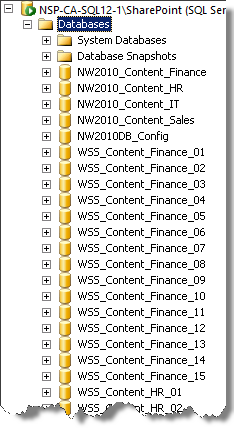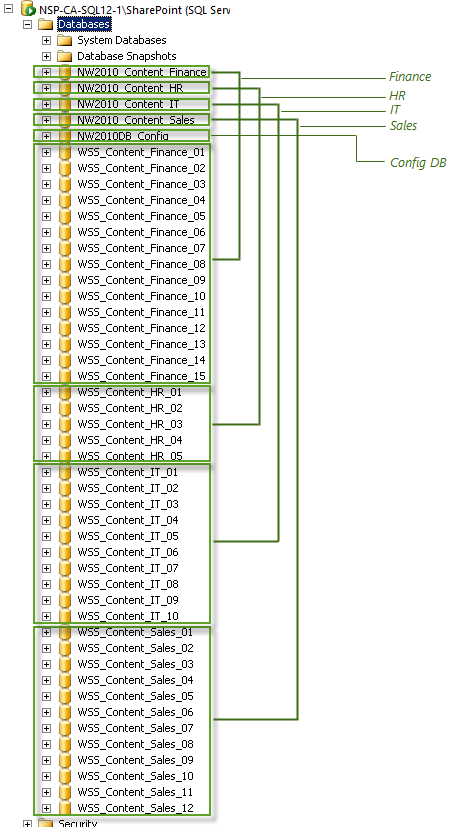Database backup
Developing a database backup strategy involves synchronizing backup and restore activities for mapped databases. For full recovery model, the backup strategy also involves scheduling routine backups of transaction logs.
Synchronize backup and restore activities for mapped databases to prevent out-of-sync data.
For example, if ten SharePoint content databases are mapped to a single Nintex Workflow content database, then all 11 databases must be backed up at the same time. Restore of these databases also must happen at the same time.
Because of this requirement to synchronize backup and restore, take special care when setting up incremental (transaction log) backups. Be sure to configure the sequence of backup so that mapped databases are backed up together.
Note: The Nintex Workflow configuration database can be backed up at any time, as long as it is not acting as a content database.
For example, consider the earlier scenario in which content databases are organized by department.

With the default backup sequence, all Nintex databases ("NW" database names) are backed up before SharePoint databases ("WSS" database names). A typical fifteen-minute period for incremental backups could cause the Nintex Workflow content database NW2010_Content_Sales to become out of sync with its mapped SharePoint content databases (those database names beginning with WSS_Content_Sales_).
With the configured backup sequence, mapped databases are less likely to go out of sync. For example, NW2010_Content_Sales is backed up with its 12 mapped SharePoint databases (those database names beginning with WSS_Content_Sales_).
You can configure backup sequences using scripts, SQL Server agents, or third-party backup tools.

|

|
|
Default backup sequence. |
Configured backup sequence to back up mapped databases together. |
If your databases use the full recovery model, then make sure you also back up the transaction log to keep its file size under control. For more information on transaction log growth and truncation, see the following TechNet article: Transaction Log Truncation.